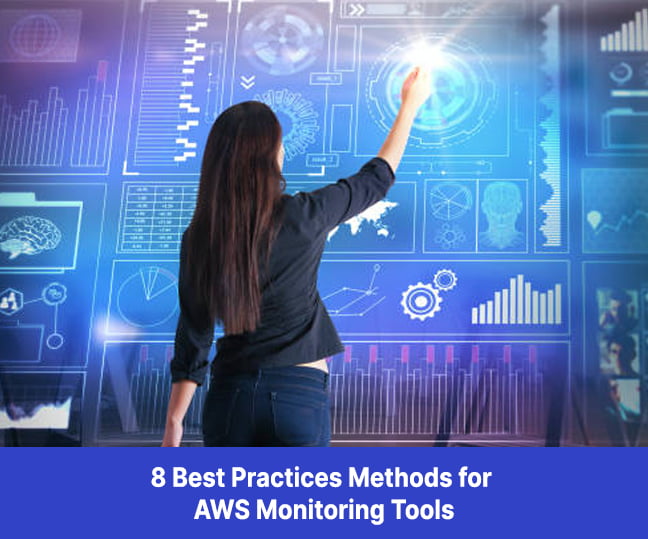Security breaches can be a ‘make or break’ moment for banks since they may result in severe consequences. Some of the fears are financial losses, legal penalties, and reputational damage. After all, a single breach can undermine user confidence while causing major business loss. Additionally, banks may face regulatory fines and increased scrutiny from oversight bodies. Implementing integrated ITOPs can help mitigate these risks by providing a comprehensive framework for monitoring and managing IT infrastructure, ensuring both security and compliance.
Banks also operate under stringent regulatory frameworks that mandate strict compliance with various standards and guidelines. Regulations such as GDPR, PCI DSS, and others require banks to implement specific security measures to protect customer data. Compliance involves regular reporting, audits, and adherence to best practices.
Hence, managing IT infrastructure in the banking sector can directly influence security and compliance.
Related blog: How Real-Time Network Monitoring Can Solve Key IM Challenges
Security and Compliance Challenges in Banking
Banks are frequent targets of cyber-attacks, including phishing, ransomware, and distributed denial-of-service (DDoS) attacks. These threats exploit vulnerabilities in the IT infrastructure, resulting in unauthorized access to data. Given the high stakes involved, banks must implement effective security measures to safeguard their IT infrastructure.
For instance, regular security audits and vulnerability assessments are important to unearth and overcome potential risks. They also help increase customers’ trust and maintain the integrity of financial transactions.
Steps to Implement Integrated ITOPs in Banking
Assessing current needs and identifying gaps:
The first step in implementing integrated ITOPs is to evaluate the existing operations framework with a detailed analysis of processes, tools, and performance. Identifying gaps and inefficiencies helps in understanding the areas that require improvement. This assessment should include a review of incident response protocols, system monitoring practices, and compliance tracking mechanisms. By pinpointing weaknesses, banks can prioritize areas that need immediate attention.
Detailed gap analysis also involves evaluating the alignment of ITOPs with business goals and regulatory requirements. It ensures that the IT operations framework is not only efficient but also compliant with industry standards.
Selecting the right tools and platforms for integration:
Choosing the appropriate tools and platforms is crucial for the successful integration of ITOPs. It includes selecting solutions that offer comprehensive monitoring, automation, and reporting capabilities. Tools should be able to integrate seamlessly with existing systems and provide real-time visibility into operations. Features such as automated incident response, predictive analytics, and compliance tracking are critical.
When selecting tools, it’s important to consider scalability and flexibility. The chosen platforms should be able to grow with the organization and adapt to changing regulatory requirements. Evaluating vendor support, security features, and user-friendliness are also key factors in making the right choice.
Developing a phased implementation plan:
A phased approach to implementation helps manage the transition smoothly. The plan should start with pilot projects in selected areas to test the new systems and processes. This allows for identifying potential issues and making necessary adjustments before a full-scale rollout.
Each phase should have clear objectives, timelines, and success metrics to ensure that the integration stays on track. Lessons learned from initial phases should be applied to subsequent stages to enhance the overall implementation process.
Training staff and ensuring continuous improvement:
Staff must have the right skills to use new tools and adhere to updated processes. Training programs should cover technical aspects and best practices for security and compliance, empowering the staff to be aware of all the latest developments and available tools.
Benefits of Integrated ITOPs for Security and Compliance
Centralized monitoring and management
Centralized monitoring allows banks to oversee all IT systems from a single platform. This unified approach improves visibility into network activities, making it easier to detect and address anomalies. Centralized management also simplifies the coordination of security measures across various departments, ensuring consistent application of security policies.
Threat detection and response capabilities

Integrated ITOPs enhance threat detection by using advanced analytics and real-time data to identify potential security breaches. Automated response mechanisms can quickly neutralize threats, making it incredibly tough for attackers to exploit vulnerabilities. Enhanced detection and response capabilities help prevent data breaches and minimize their impact on banking operations.
Streamlined implementation of security protocols
Integrated ITOPs streamline the deployment of security policies and protocols, ensuring they are consistently applied across all systems. This uniformity reduces gaps in security coverage and helps maintain a strong defense against cyber threats. The streamlined implementation also simplifies the process of updating policies in response to evolving security challenges.
Automated compliance tracking and reporting
Automation in compliance tracking ensures that all regulatory requirements are continuously monitored and met. Integrated ITOPs generate real-time compliance reports, making it easier for banks to demonstrate adherence to regulations. Automated reporting reduces the manual workload while lowering non-compliance risks due to human errors.
Simplified audit processes
With integrated ITOPs, audit processes become more straightforward and less time-consuming. Centralized data collection and automated reporting provide auditors with easy access to necessary information. This transparency simplifies the audit process while optimizing what it takes to conduct and manage audits.
Continuous compliance enforcement
Continuous monitoring ensures that compliance with regulatory requirements is maintained at all times. Integrated ITOPs automatically enforce compliance policies, identifying and addressing violations promptly. The ongoing vigilance helps banks avoid penalties and maintain a strong regulatory standing.
As the banking industry keeps progressing, the role of integrated ITOPs will become increasingly important. It’s the only way that banks can meet security challenges and regulatory demands.
Related blog: How Enterprises Can Enhance SD-WAN Performance Monitoring



















